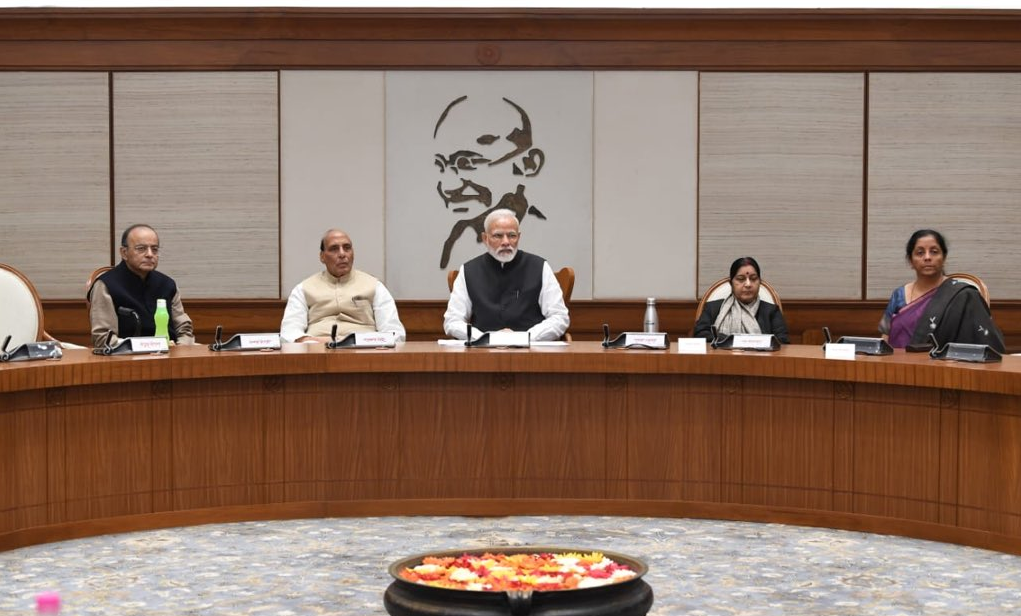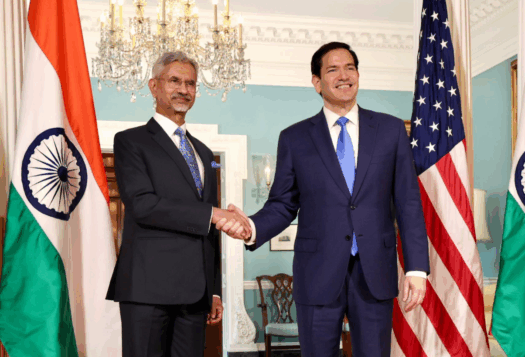
Can New Delhi Pursue its Own Brand of Tailored Deterrence?
By: Sylvia Mishra
On February 14th, 2019, in a dastardly terror attack conducted and claimed by Pakistan-based terror network Jaish-e-Mohammad (JeM) in Pulwama District in Kashmir killed more than 40 Central Reserve Police Force (CRPF) personnel. The Ministry of External Affairs (MEA) issued a statement that the Government of India (GOI) is firmly and resolutely committed to take all necessary measures to safeguard national security, fight terrorism and also appealed to the international community to support the proposal to list terrorists, including JeM Chief Masood Azhar as a designated terrorist under 1267 Sanctions Committee of UN Security Council.
India has again been a victim of cross-border terrorism by a militant group with ties to Pakistan’s military and Inter-Services Intelligence (ISI), as India soon pointed out and Pakistan swiftly denied. India’s deterrence strategy has involved elements of deterrence by denial, deterrence by counter-narrative, and deterrence by punishment. However, the Indian government has not been successful in raising the costs for the Pakistani military against continuing its support for cross-border terrorism. Can India tailor deterrent threats to hold at risk what Pakistani’s civilian government, military, and terrorist networks value the most? So far the Indian government has gained mileage through its adherence to a normative framework while dealing with Pakistan. Will New Delhi be able to strategize a tailored deterrence that discredits the military and security establishment of Pakistan without escalation and involving other regional actors?
The Pulwama terror attack is reminiscent of several others in the past four to five years, including Gurudaspur (2015), Pathankot (2016), Uri (2016), Baramulla (2016), Sunjuwan (2018). It once again exposes two factors: 1. failure of the Indian government’s Kashmir policy; 2. intelligence failure and lapses in internal security; 3. lack of a coherent Pakistan policy; and 4. India’s “China problem.” However, most importantly, this attack underscores New Delhi’s unsuccessful attempts in deterring terrorist attacks emanating from across the border. While there is tremendous pressure on the Indian government to respond with kinetic options, the presence of nuclear weapon and Pakistan’s threats to use tactical nuclear weapons have further complicated the situation. Several experts have made a strong case for India to consider military options for a variety of reasons – inaction will reinforce Pakistan’s nuclear deterrence; to undermine and defeat the sense of legitimacy and immunity that terror outfits like JeM and Taliban enjoys; and most importantly a “deep sense of anguish” imbued among all Indians given the repeated murder of Indian citizens.
India needs a tailored deterrence strategy that sends a strong response to Pakistan whilst not escalating a nuclear crisis and preventing the involvement of other regional players.
As India prepares to effectively respond to the Pulwama incident, it faces some of the same challenges as it previously did, in the aftermath of all major terrorist attacks. On September 30, 2016, after the Uri attacks, I wrote for South Asian Voices “Can India Pressure Pakistan to Behave Reasonably?“ and argued that given the limitations of military actions, India will continue to grapple with the conundrum of effectively countering Pakistan’s pursuit of low intensity conflict while not escalating nuclear tensions. On the international level, if anything India’s options are further limited. India needs a tailored deterrence strategy that sends a strong response to Pakistan whilst not escalating a nuclear crisis and preventing the involvement of other regional players.
Ananth Krishnan, Visiting Fellow at Brookings India, has written that Beijing has significant interests in protecting its assets in Pakistan with the help from the Pakistani military and intelligence agencies. It would be in Delhi’s interest to tailor a deterrence strategy that effectively punishes the Pakistani intelligence services and military apparatus and precludes the involvement of any other regional players – especially China. Given China’s vested interest in the China-Pakistan Economic Corridor, it is not surprising that there are several articles emanating from Beijing that caution restraint to India. A Global Times article opined that New Delhi should resort to quiet diplomacy instead of directing aggressive rhetoric to pressure Beijing.
The severity of the attack and the political costs for the Modi government if he fails to respond both indicate there is an imminent crisis in South Asia. New Delhi should effectively tailor a deterrence strategy vis-à-vis the Pakistani army and the Inter-services Intelligence Directorate (ISI) to cease using groups like JeM and Lashkar-e-Tayyba to terrorize India. Decision-makers in India should adopt a page of Israel’s playbook and embrace strategies – placing counterterrorism at the heart of deterrence – that have led Israel to checkmate ISIS. In a powerful essay, Why ISIS Fears Israel, Graham Allison writes that Israel is preventing ISIS attacks through a strategy of patient, vigilant deterrence. As Cold War strategists have noted that effective deterrence requires three C’s: clarity, capability, and credibility. Israel’s combination of holding targets to general and specific deterrence involves rigorous and ongoing analysis of the enemy’s characteristics, considerations, capabilities, and decision-making processes while persuading the “futility of continuing to fight” and reminding them of the “outcome of previous confrontations.”
Tailored deterrence strategies against asymmetric forces are possible. It is long overdue that Pakistan’s establishment root out these terror-networks.
***

Pulwama Suicide Attack: Bracing for the Escalation?
By: Sarral Sharma
On February 14th, Pakistan-based terror outfit JeM conducted a Vehicle-borne Improvised Explosive Device (VBIED) blast on the CRPF convoy passing through South Kashmir’s Pulwama district. The suicide bombing resulted in over 40 CRPF casualties. It was a one-off attack in Jammu and Kashmir’s (J&K) three-decade-old insurgency. Apart from an apparent intelligence failure, the most surprising element was the involvement of a local Kashmiri man, Adil Ahmad Dar, behind the suicide attack. This has possibly changed the contours of local militancy in Kashmir. There is an apparent threat of more local boys attempting similar suicide attacks in the future.
India has already blamed Pakistan for its “direct” involvement in the Pulwama attack based on some “incontrovertible evidence” and called for an “immediate and verifiable action” against the Jaish. While refuting these allegations, Pakistan’s Prime Minister Imran Khan has sought “actionable evidence” from India to prove Islamabad’s hand behind the attack.
New Delhi’s response to this incident, after the 2016 Pathankot and Uri attacks, could bring India and Pakistan on the verge of a possible escalation crisis. The Modi government has already taken some diplomatic steps such as withdrawing the Most Favored Nation (MFN) status, briefing foreign envoys in New Delhi on the incident, among others, in order to punish Pakistan for its tacit role in the Pulwama attack. Furthermore, India’s military response this time might be a notch higher than the 2016 “surgical strikes” considering PM Modi is under immense domestic pressure and the crucial Lok Sabha elections are due to take place in the next couple of months.
India’s conventional military options could range from limited precision airstrikes on selected terrorist targets located in Pakistan-administered Kashmir or shallow ground-based attacks along the borders. Sub-conventional responses could include decapitation of Jaish’s top leadership or destroying its headquarters in Bahawalpur, etc. However, Khan’s warning of a confirmed “retaliation,” in case India conducts a conventional strike on Pakistan’s territory, may lead to further escalation between the two neighboring countries.
On the other hand, Indian security forces will likely intensify counterinsurgency operations to bust sleeper cells and Over Ground Workers (OGWs) of different militant outfits operating in the Kashmir Valley. The foremost task remains to avoid incidents of suicide bombing in the future. According to media reports, the J&K Police had sent an intelligence input on February 8th to different security agencies warning of a possible IED attack. The investigation is still underway to find out why the attack occurred given this intelligence warning. There is also the question of whether Standard Operating Procedures (SOPs) were conducted to sanitize the route before the 78-vehicle CRPF convoy was allowed to ply on the highly-sensitive Jammu-Kashmir highway.
India’s military response this time might be a notch higher than the 2016 “surgical strikes” considering PM Modi is under immense domestic pressure and the crucial Lok Sabha elections are due to take place in the next couple of months.
Notwithstanding the tactical success of the “Operation All Out” in targeting top commanders of different outfits, the discontentment among local youth continues to grow in some districts of Kashmir. The Pulwama attack might motivate more locals to pick up arms and reinvigorate militant cadres to conduct spectacular strikes against the Indian security forces. As a result, New Delhi may require to initiate simultaneous political and security efforts in order to create an environment to conduct the upcoming parliamentary polls in the Valley.
Moreover, the timing of the attack is critical considering recent developments in Afghanistan. The U.S-led reconciliation talks with the Taliban are in the final stage and there is a growing concern in India over Pakistan’s role in the ongoing negotiations. However, the recent cancellation of the U.S.-Taliban talks in Islamabad raises some doubts over Pakistan’s control on the ongoing negotiations. Nevertheless, the Taliban’s increasing influence in Kabul could prove to be a major security threat for India in the coming months, especially in Kashmir. It is possible that terror outfits such as JeM and Lashkar-e-Toiba (LeT) might feel more emboldened to create security problems in J&K.
The Pulwama attack has exposed some gaping holes in the Indian security apparatus which will require immediate fixing in order to avoid similar incidents in the future. Intra-agencies coordination in Kashmir will be prioritized and new SOPs might be put into place to safeguard military convoys passing through militancy-affected areas in the Valley. Chances of the escalation between India and Pakistan are high as PM Modi vows to avenge the Pulwama attack and Islamabad seems unperturbed to take actions against the Kashmir-centric outfits, JeM and LeT, operating on its soil.
***
Image 1: PMO India via Twitter
Image 2: Aamir Qureshi via Getty Images


